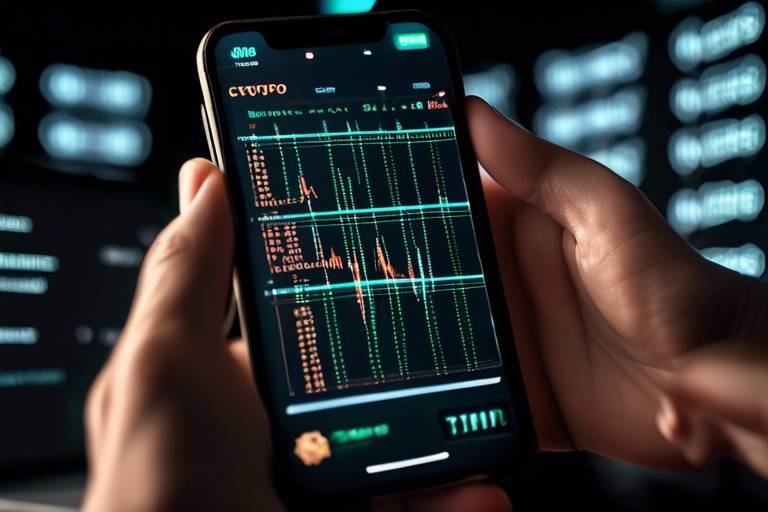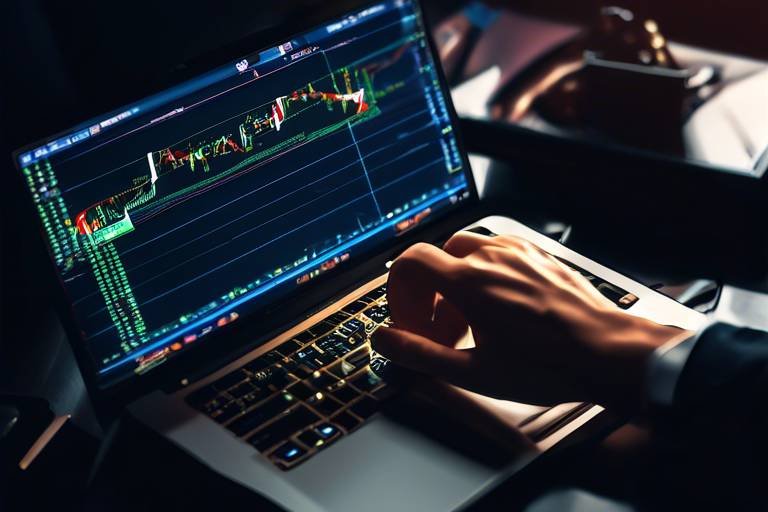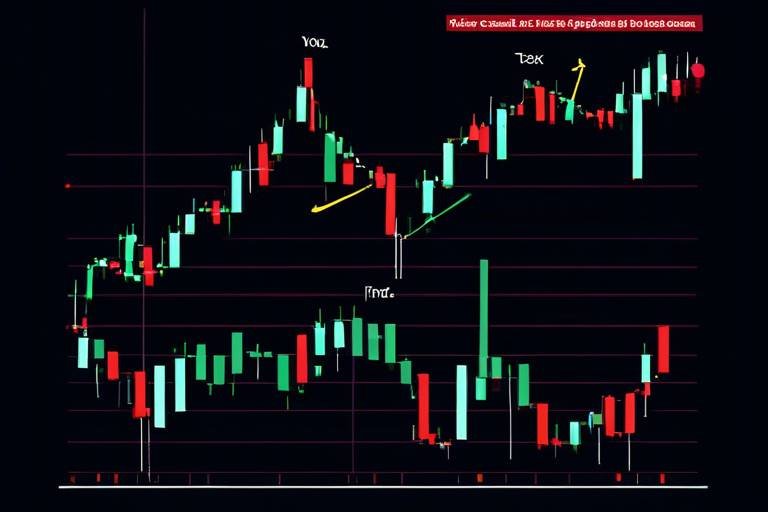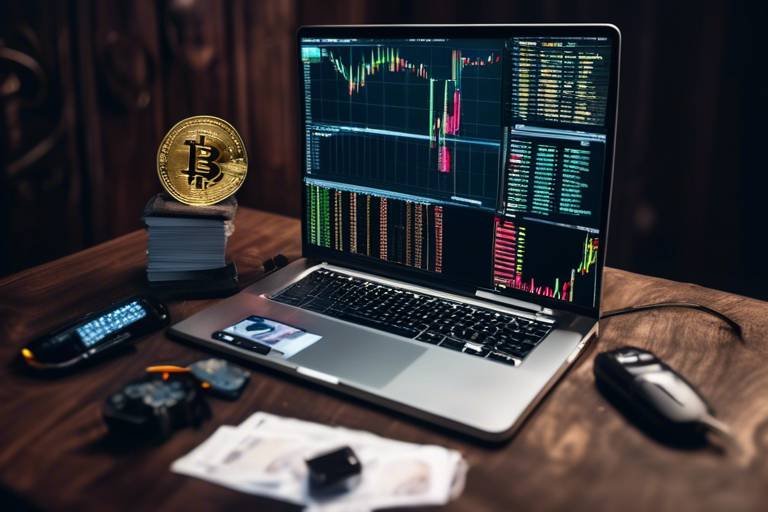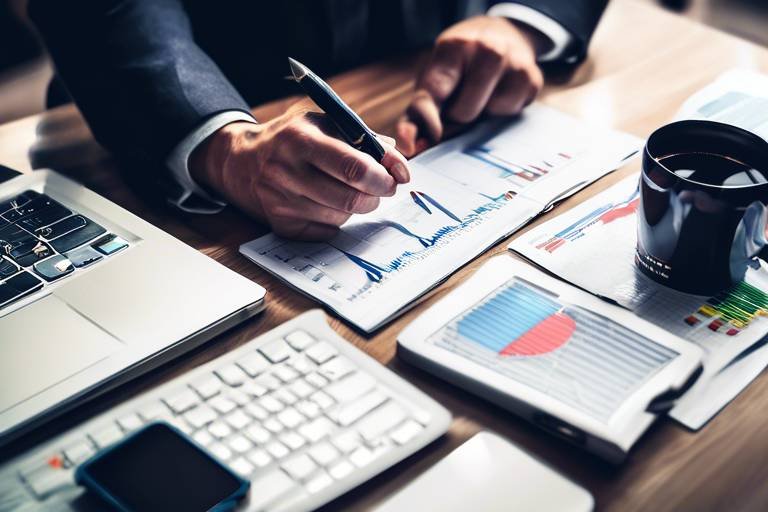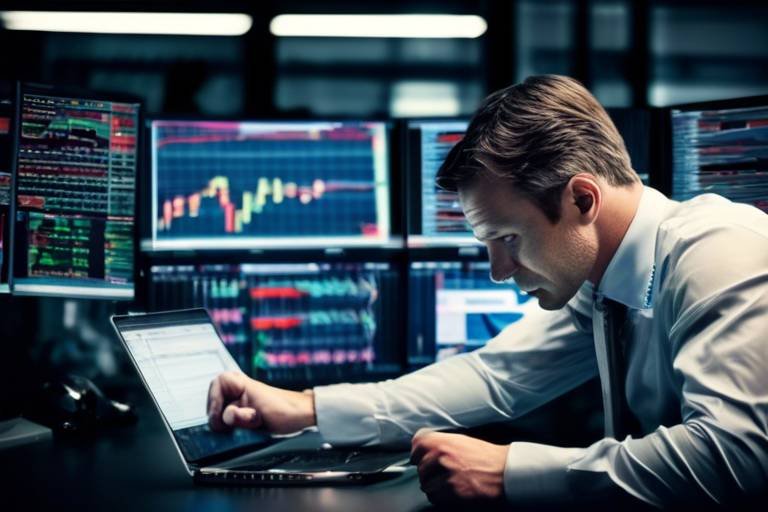The Benefits of Trading Simulations for Learning
In today's fast-paced financial world, trading simulations have emerged as a revolutionary tool, especially for those looking to sharpen their trading skills. Whether you're a novice trying to grasp the basics or a seasoned trader aiming to refine your strategies, these simulations provide a unique opportunity to engage with the market without the fear of losing hard-earned cash. Imagine being able to dive into the market's pulse, experimenting with different tactics, and gaining invaluable insights—all from the comfort of your home. Sounds enticing, right?
But what exactly are trading simulations? They are virtual environments that mimic real market conditions, allowing users to practice trading as if they were in a live scenario. This means you can buy and sell stocks, commodities, or currencies, all while observing how your decisions impact your portfolio. It’s like playing a video game where you can test your skills without any real-world consequences. This aspect is particularly beneficial for beginners who might feel overwhelmed by the complexities of trading.
Trading simulations serve as a fantastic educational tool, providing a safe space for users to develop their trading strategies and gain a deeper understanding of market dynamics. Picture it as a training ground where you can make mistakes, learn from them, and improve your skills—all without the financial repercussions. This hands-on experience is crucial in a field where theoretical knowledge often falls short. The more you practice, the more confident and adept you become.
One of the standout features of trading simulations is the enhanced learning experience they offer. Unlike traditional learning methods where you might simply read about trading strategies or watch videos, simulations allow you to actively engage with the material. You can apply theoretical concepts in real-time scenarios, fostering a deeper understanding and retention of trading principles. For instance, you might learn about technical analysis in class, but it's only when you apply it in a simulation that the concepts truly click.
Simulations also provide the opportunity for real-time market analysis. As you navigate through various market conditions, you develop analytical skills that are essential for successful trading. You learn to identify trends, recognize patterns, and make informed decisions based on current data. This practice is invaluable, as it prepares you for the unpredictable nature of actual trading environments.
Another advantage of trading simulations is the built-in feedback mechanisms. Most platforms offer performance tracking, allowing you to see how your trades perform over time. This feature is crucial for identifying your strengths and weaknesses. For example, if you notice that you're consistently losing money on certain trades, you can analyze your strategy and make adjustments. This cycle of feedback and improvement is essential for continuous growth in your trading journey.
Perhaps one of the most critical skills you'll develop through trading simulations is effective risk management. In a risk-free environment, you can experiment with various strategies and learn how to manage your exposure. For instance, you might try out different stop-loss orders or diversify your portfolio to see how these tactics can minimize losses. These lessons are vital, as they translate directly to real-world trading scenarios where managing risk can mean the difference between profit and loss.
As you engage with trading simulations, you’ll find that your confidence begins to build. With each successful trade and positive outcome, you’ll feel more prepared to tackle real market challenges. It’s akin to training for a marathon; the more you practice, the more confident you become in your ability to cross the finish line. This growing confidence can significantly impact your trading performance, making you more decisive and less hesitant when it comes to making real trades.
Trading simulations offer a valuable platform for developing and testing various trading strategies. This experimentation is crucial for finding effective approaches tailored to your individual trading style. You can try out different techniques, from day trading to swing trading, and see what resonates with you. This process is akin to a chef experimenting with different recipes until they find the perfect blend of flavors.
Another significant benefit of trading simulations is the ability to practice adapting to market changes. In the simulation environment, you can adjust your strategies in response to fluctuating market conditions. This adaptability is key to navigating the often unpredictable nature of financial markets. Just as a surfer must adjust their stance based on the waves, traders must be able to pivot their strategies to ride the waves of market changes.
Many trading simulation platforms foster vibrant communities where users can share experiences and strategies. This collaborative environment enhances learning through shared insights and collective knowledge. Engaging with fellow traders can provide new perspectives and techniques that you might not have considered. It's like being part of a book club where everyone brings their unique interpretations to the table, enriching the overall experience.
- What is a trading simulation? - A trading simulation is a virtual platform that replicates real market conditions, allowing users to practice trading without financial risk.
- Who can benefit from trading simulations? - Both beginners and experienced traders can benefit from trading simulations as they enhance trading skills and decision-making.
- How do trading simulations help with risk management? - They provide a risk-free environment to experiment with different strategies, helping users learn to manage risks effectively.
- Can I develop my own trading strategies using simulations? - Yes, trading simulations allow users to develop and test various strategies tailored to their trading styles.
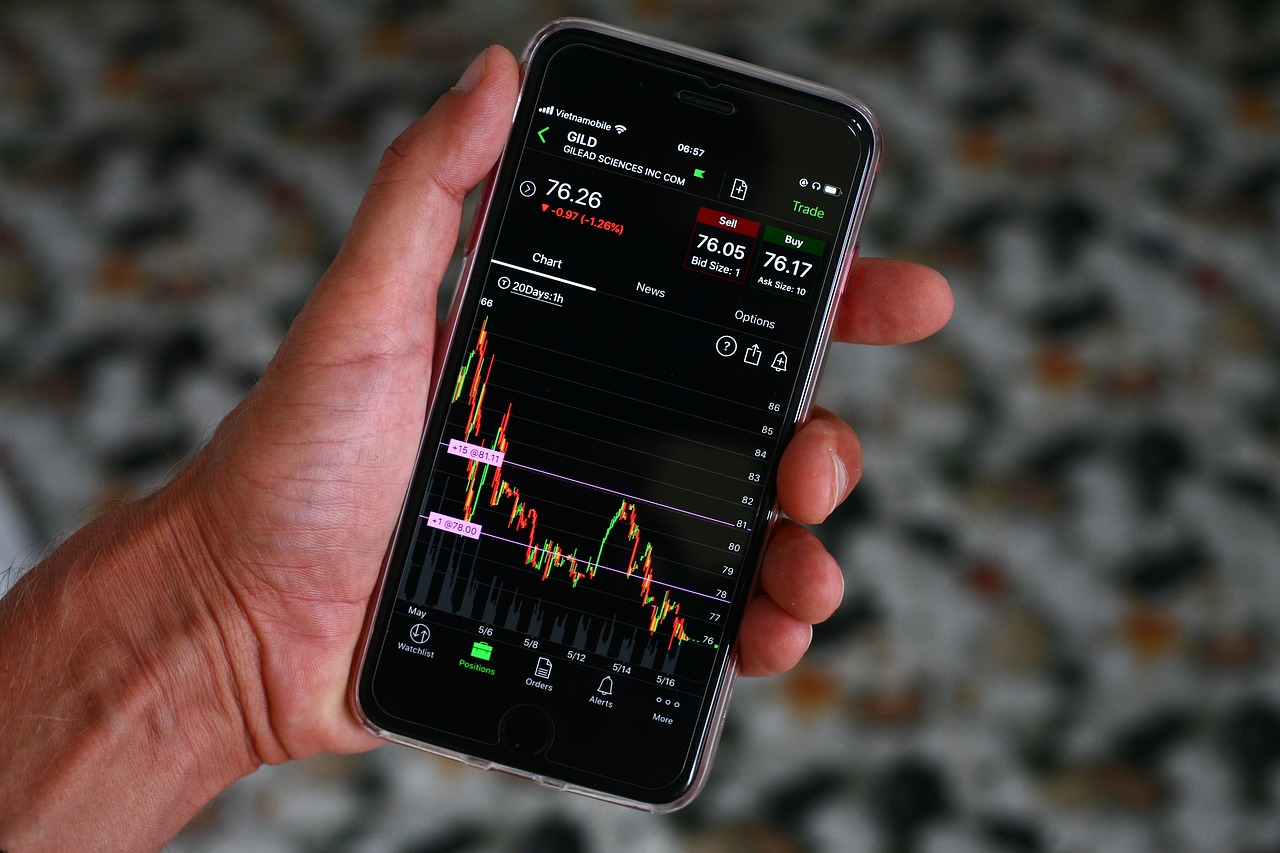
Understanding Trading Simulations
Trading simulations are innovative virtual platforms designed to mimic real market conditions, allowing users to engage in trading activities without the fear of losing actual money. Imagine stepping into a bustling marketplace where you can practice your trading skills, test your strategies, and explore various market dynamics—all without any financial risk. This unique feature makes trading simulations an invaluable tool for both beginners eager to learn the ropes and seasoned traders looking to refine their skills.
At their core, trading simulations provide an interactive environment where users can apply theoretical knowledge in a practical setting. Think of it as a flight simulator for traders; just as pilots practice flying in a controlled environment before taking to the skies, traders can experiment with different techniques and strategies in a risk-free arena. This hands-on experience fosters a deeper understanding of trading principles and enhances retention, making it easier to recall and apply these concepts in real-world situations.
One of the standout features of trading simulations is their ability to offer real-time market analysis. Users can observe market trends, analyze data, and make decisions based on current conditions, which is crucial for developing the analytical skills necessary for successful trading. This practice prepares traders for the unpredictable nature of actual financial markets, where timing and informed decision-making can make all the difference between profit and loss.
Moreover, most trading simulations come equipped with feedback mechanisms that track performance. This feature empowers users to identify their strengths and weaknesses, providing a clear roadmap for continuous improvement. For instance, if a trader consistently underperforms in a particular strategy, the simulation will highlight this, allowing the trader to pivot and adjust their approach. This iterative learning process is essential for honing one’s trading skills.
Additionally, trading simulations serve as an excellent platform for developing risk management skills. By experimenting with different strategies in a controlled environment, participants can learn how to effectively manage risks associated with trading. This is vital for minimizing potential losses in real trading scenarios, where the stakes are much higher. Understanding how to balance potential rewards against risks can ultimately lead to more informed and confident trading decisions.
In summary, trading simulations are not just tools for practice; they are comprehensive learning environments that enhance trading skills, decision-making abilities, and market understanding. They provide a safe space for traders at all levels to grow, adapt, and thrive in the complex world of finance.

Enhanced Learning Experience
This article explores the advantages of using trading simulations as a learning tool, emphasizing their role in enhancing trading skills, decision-making, and market understanding for both beginners and experienced traders.
Trading simulations are virtual platforms that replicate real market conditions, allowing users to practice trading without financial risk. They provide a safe environment for developing strategies and understanding market dynamics.
Trading simulations offer a hands-on learning experience, enabling users to apply theoretical concepts in a practical setting. Imagine trying to ride a bike for the first time without training wheels; it can be daunting! However, with a simulation, you can practice balancing and pedaling without the fear of falling. This interactive approach fosters deeper understanding and retention of trading principles, allowing users to grasp complex concepts more naturally.
When engaging with these simulations, traders can experiment with various strategies in real-time scenarios. This means they can test their skills in a risk-free environment, which is crucial for building a solid foundation in trading. By immersing themselves in simulated trading, users can:
- Explore different asset classes and market conditions
- Practice executing trades under various scenarios
- Gain insights into market behavior without the pressure of real money on the line
The ability to learn actively rather than passively is one of the standout features of trading simulations. Instead of merely reading about trading strategies or watching videos, users can engage directly with the market data, making decisions and seeing the outcomes of those decisions unfold in real time. This experiential learning is incredibly powerful, as it not only enhances understanding but also helps in retaining knowledge far better than traditional learning methods.
Simulations allow traders to analyze market trends and data in real time, helping them develop analytical skills crucial for successful trading. This practice prepares them for actual market conditions. By observing how market fluctuations impact their trading positions, users learn to make informed decisions quickly. It’s like being in a simulation of a high-stakes game where every move counts, and you must think on your feet!
Most trading simulations provide feedback on performance, enabling users to identify strengths and weaknesses. This feature is essential for continuous improvement and skill enhancement. After each trading session, users can review their trades, assess what worked and what didn’t, and refine their strategies accordingly. This iterative process is akin to a sports team reviewing game footage to improve their performance in future matches.
Participants learn to manage risks effectively by experimenting with different strategies in a risk-free environment. This skill is vital for minimizing losses in real trading scenarios. Just like a pilot practicing in a flight simulator, traders can test their limits and learn to navigate through turbulent market conditions without the fear of crashing their finances.
Using trading simulations helps build confidence in trading abilities. As users gain experience and see positive results in simulations, they become more prepared for real market challenges. This gradual exposure to trading scenarios allows individuals to step into real trades with a sense of assurance, knowing they have honed their skills through practice.
Simulations provide a platform for traders to develop and test various trading strategies. This experimentation is crucial for finding effective approaches tailored to individual trading styles.
Traders can practice adapting their strategies to changing market conditions within simulations. This adaptability is key to navigating the often unpredictable nature of real financial markets.
Many trading simulation platforms foster communities where users can share experiences and strategies. This collaborative environment enhances learning through shared insights and collective knowledge.
1. What are trading simulations?
Trading simulations are virtual platforms that allow users to practice trading in a risk-free environment, mimicking real market conditions.
2. Are trading simulations useful for beginners?
Absolutely! They provide a safe space for beginners to learn and practice without the fear of losing real money.
3. Can experienced traders benefit from simulations?
Yes, experienced traders can use simulations to refine their strategies and test new approaches without financial risk.
4. How do simulations help with risk management?
Simulations allow traders to experiment with different strategies, helping them understand risk management techniques in a controlled setting.
5. Is there a community aspect to trading simulations?
Many platforms offer community features where users can share insights, strategies, and experiences, enhancing the learning process.

Real-Time Market Analysis
One of the most compelling features of trading simulations is their ability to provide . Imagine stepping into a virtual trading floor where you can observe market movements as they happen, just like a seasoned trader would. This immersive experience allows users to analyze market trends, price fluctuations, and trading volumes in real time, which is crucial for developing the analytical skills needed for successful trading.
In a real trading environment, the ability to interpret data quickly can make the difference between profit and loss. Trading simulations replicate this urgency, enabling participants to respond to market changes instantaneously. For instance, when a major economic indicator is released, traders who can swiftly analyze its impact on the market are more likely to capitalize on opportunities. Here’s a breakdown of what real-time market analysis entails:
- Trend Analysis: Users can identify bullish or bearish trends and make informed decisions based on current market sentiment.
- Data Interpretation: The ability to read charts and graphs in real time helps traders understand market movements better.
- Risk Assessment: Analyzing real-time data allows traders to evaluate potential risks associated with their trades, leading to more informed decision-making.
Moreover, trading simulations often come equipped with advanced tools and features that enhance the analysis process. For instance, traders can utilize technical indicators such as moving averages, Relative Strength Index (RSI), and Bollinger Bands to gain deeper insights into market behavior. By practicing with these tools in a simulated environment, users can refine their skills and develop a keen sense for when to enter or exit a trade.
This hands-on experience not only boosts confidence but also prepares traders for the real-world challenges they will face. As they practice analyzing real-time data, they become adept at recognizing patterns and making swift decisions—skills that are invaluable in high-pressure trading environments.
In conclusion, the feature of trading simulations serves as a powerful training ground for both novice and experienced traders. It transforms theoretical knowledge into practical expertise, equipping users with the tools they need to navigate the complexities of the financial markets successfully.
- What are trading simulations? Trading simulations are virtual platforms that allow users to practice trading in a risk-free environment, replicating real market conditions.
- How do trading simulations enhance learning? They provide hands-on experience, allowing users to apply theoretical concepts in a practical setting, which fosters deeper understanding.
- Can I develop my trading strategies using simulations? Yes, simulations offer a platform for traders to experiment with and refine various trading strategies based on market conditions.
- Are trading simulations suitable for beginners? Absolutely! They are an excellent way for beginners to learn the ropes without the pressure of real financial risk.
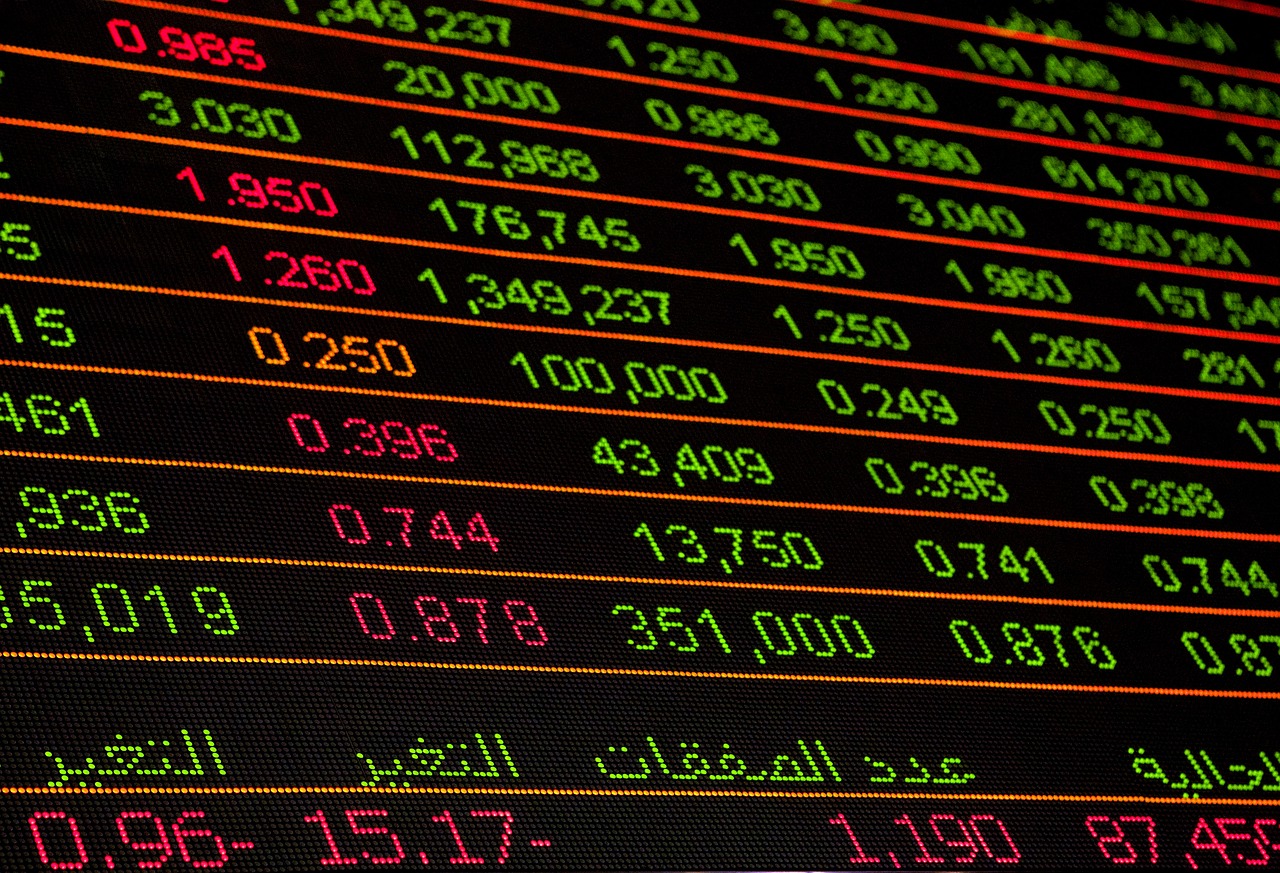
Feedback and Performance Tracking
Feedback and performance tracking are pivotal components of trading simulations, acting as a compass that guides traders on their journey towards mastery. Imagine you're on a road trip without a map; you'd likely get lost, right? Similarly, without feedback, traders can easily veer off course, making mistakes that could be costly in real-life scenarios. Trading simulations provide real-time feedback, allowing users to see exactly how their decisions impact their trading outcomes. This immediate insight is invaluable, as it enables traders to adjust their strategies on the fly and learn from their mistakes without any financial repercussions.
Most trading simulation platforms come equipped with robust analytics tools that track various performance metrics. These metrics can include win/loss ratios, average profit per trade, and even emotional responses to market fluctuations. By analyzing this data, traders can pinpoint their strengths and weaknesses, much like an athlete reviews game footage to improve their performance. For instance, if a trader notices that they consistently lose when trading a specific asset, they can take a step back, reassess their strategy, and make the necessary adjustments.
Moreover, many platforms offer personalized feedback based on users' trading behaviors. This feedback can be tailored to highlight areas for improvement, such as risk management techniques or emotional discipline. Imagine receiving a coach's advice after every game; this is the kind of support that trading simulations provide. Users can learn to manage their emotions, which is crucial in a field where fear and greed can lead to poor decision-making.
To illustrate, here’s a simple table that showcases some common performance metrics tracked in trading simulations:
| Performance Metric | Description |
|---|---|
| Win/Loss Ratio | The number of winning trades compared to losing trades. |
| Average Profit per Trade | The average amount earned or lost on each trade. |
| Maximum Drawdown | The largest drop from a peak to a trough in the trading account. |
| Trade Frequency | The number of trades executed within a specific period. |
In conclusion, feedback and performance tracking in trading simulations are not just about numbers; they are about fostering a growth mindset. Traders can continuously refine their strategies, build resilience, and develop a deeper understanding of market dynamics. The more feedback they receive, the better equipped they are to tackle real-world trading challenges. It's like having a personal mentor who is always available, guiding you through the ups and downs of the trading landscape.
- What are trading simulations? Trading simulations are virtual platforms that allow users to practice trading without financial risk, mimicking real market conditions.
- How do trading simulations provide feedback? They track various performance metrics and provide insights into trading decisions, helping users identify strengths and weaknesses.
- Can I develop strategies using trading simulations? Absolutely! Simulations offer a safe environment to experiment with and refine different trading strategies.
- Are trading simulations suitable for beginners? Yes, they are an excellent resource for beginners to learn the ropes of trading without the risk of losing real money.

Risk Management Skills
This article explores the advantages of using trading simulations as a learning tool, emphasizing their role in enhancing trading skills, decision-making, and market understanding for both beginners and experienced traders.
Trading simulations are virtual platforms that replicate real market conditions, allowing users to practice trading without financial risk. They provide a safe environment for developing strategies and understanding market dynamics.
Trading simulations offer a hands-on learning experience, enabling users to apply theoretical concepts in a practical setting. This interactive approach fosters deeper understanding and retention of trading principles.
Simulations allow traders to analyze market trends and data in real time, helping them develop analytical skills crucial for successful trading. This practice prepares them for actual market conditions.
Most trading simulations provide feedback on performance, enabling users to identify strengths and weaknesses. This feature is essential for continuous improvement and skill enhancement.
Participants learn to manage risks effectively by experimenting with different strategies in a risk-free environment. This skill is vital for minimizing losses in real trading scenarios. By simulating various market conditions, traders can test how different strategies perform under stress, allowing them to make informed decisions when real money is on the line. For instance, consider the following key aspects of risk management that can be honed through trading simulations:
- Position Sizing: Understanding how much capital to allocate to each trade is crucial. Simulations allow traders to practice different position sizes and see the impact of their choices on overall portfolio performance.
- Stop-Loss Orders: Learning to set stop-loss levels helps traders limit potential losses. In a simulation, users can experiment with various stop-loss strategies to find the most effective levels for their trading style.
- Emotional Control: Trading can be an emotional rollercoaster, but simulations help in developing the discipline to stick to a plan without the pressure of real financial stakes.
By practicing these elements, traders can build a solid foundation in risk management, which is essential for long-term success in the markets. The ability to assess risk effectively not only protects capital but also enhances overall trading performance.
Using trading simulations helps build confidence in trading abilities. As users gain experience and see positive results in simulations, they become more prepared for real market challenges.
Simulations provide a platform for traders to develop and test various trading strategies. This experimentation is crucial for finding effective approaches tailored to individual trading styles.
Traders can practice adapting their strategies to changing market conditions within simulations. This adaptability is key to navigating the often unpredictable nature of real financial markets.
Many trading simulation platforms foster communities where users can share experiences and strategies. This collaborative environment enhances learning through shared insights and collective knowledge.
Q1: What are trading simulations?
Trading simulations are virtual platforms that mimic real market conditions, allowing users to practice trading without risking real money.
Q2: Who can benefit from trading simulations?
Both beginners and experienced traders can benefit from trading simulations. Beginners can learn the basics, while experienced traders can refine their strategies.
Q3: How do trading simulations help with risk management?
Simulations provide a risk-free environment to practice position sizing, setting stop-loss orders, and developing emotional discipline, all of which are essential for effective risk management.
Q4: Can I use trading simulations to develop my own strategies?
Absolutely! Trading simulations are an excellent way to experiment with different strategies and see what works best for your trading style.

Building Confidence
Building confidence in trading is akin to nurturing a plant; it requires patience, the right environment, and consistent care. When traders engage in simulations, they step into a safe space where they can experiment without the fear of losing real money. This environment is crucial because it allows users to make mistakes and learn from them, much like a child learning to ride a bike. Initially, there may be wobbles and falls, but with practice, they find their balance and gain the confidence to ride smoothly.
As users navigate through various scenarios in trading simulations, they begin to see patterns and develop a sense of market intuition. This growing familiarity with the trading environment helps to eliminate the fear of the unknown. Instead of feeling overwhelmed by the complexities of the market, traders start to feel empowered. They learn to trust their instincts and decisions, which is essential when transitioning to real trading. The more they practice, the more confident they become.
Moreover, trading simulations often include features that allow users to track their performance over time. This feedback mechanism is invaluable for building confidence. For instance, if a trader sees consistent improvement in their simulated trades, it reinforces their belief in their abilities. A simple table showing performance metrics can illustrate this progress:
| Simulation Session | Trades Made | Successful Trades | Win Rate (%) |
|---|---|---|---|
| Session 1 | 10 | 4 | 40 |
| Session 2 | 15 | 8 | 53.3 |
| Session 3 | 20 | 12 | 60 |
This table clearly shows the trader's journey from their first session to subsequent ones, highlighting improvements in both the number of trades and the win rate. Such tangible evidence of progress can be a powerful motivator, encouraging traders to push their limits and refine their strategies further.
In addition to performance tracking, engaging with other traders in simulation environments fosters a sense of community. Sharing experiences and strategies can significantly boost a trader's confidence. When you hear others discuss their challenges and triumphs, it normalizes the ups and downs of trading, making you feel less isolated in your journey. It’s like being part of a team where everyone is cheering each other on, which can be incredibly uplifting.
Ultimately, the confidence built through trading simulations translates into real-world trading. As traders become more familiar with their strategies and the market dynamics, they approach live trading with a sense of assurance that can make all the difference. They are not just stepping into the market; they are doing so with the knowledge and experience gained from their simulated practice. This transition is crucial for achieving long-term success in trading.
- What are trading simulations? Trading simulations are virtual platforms that mimic real market conditions, allowing users to practice trading without financial risk.
- How do trading simulations help in building confidence? They provide a safe environment for traders to practice, make mistakes, and learn from them without financial repercussions.
- Can I develop strategies using trading simulations? Yes! Simulations are an excellent way to test and refine various trading strategies before applying them in the real market.
- Do trading simulations provide feedback? Most trading simulations offer performance tracking and feedback, which helps users identify strengths and weaknesses.

Developing Trading Strategies
When it comes to trading, having a solid strategy is like having a roadmap for a long journey. You wouldn't embark on a road trip without knowing your destination, right? Similarly, traders need to have a clear plan to navigate the often-turbulent waters of the financial markets. Trading simulations provide an excellent platform for developing and honing these strategies. They allow traders, whether novices or seasoned professionals, to experiment with different approaches without the fear of losing real money.
One of the most exciting aspects of trading simulations is the opportunity to test various strategies in real-time. This means you can adjust your tactics based on immediate market feedback. For example, if a trader is interested in day trading, they can simulate buying and selling stocks within short time frames, observing how their decisions affect their portfolio. This process not only enhances their understanding of market dynamics but also helps them identify what works best for their individual trading style.
Moreover, simulations offer a chance to learn from mistakes. Imagine driving a car and making a wrong turn; you can either panic or calmly reroute. In trading, when a strategy doesn’t yield the expected results, simulations allow traders to analyze what went wrong and adjust their approach accordingly. This iterative process is crucial for developing a robust trading strategy.
Another significant advantage of using trading simulations is the ability to adapt strategies to changing market conditions. Markets are not static; they are influenced by various factors such as economic indicators, geopolitical events, and even social media trends. In a simulation, traders can practice adjusting their strategies based on these fluctuations. For instance, they might experiment with moving averages or employ different indicators to see how these changes impact their trading outcomes.
To illustrate the importance of adaptability, consider the following table that compares different trading strategies and their effectiveness under various market conditions:
| Strategy | Market Condition | Effectiveness |
|---|---|---|
| Scalping | High Volatility | High |
| Momentum Trading | Trending Market | Very High |
| Range Trading | Sideways Market | Moderate |
| News-Based Trading | Event-Driven | High |
This table highlights how different strategies can perform under various market conditions, showcasing the necessity for traders to remain adaptable and responsive. By utilizing trading simulations, traders can practice these strategies, understand their strengths and weaknesses, and ultimately refine their approach to suit their unique trading style.
Lastly, trading simulations foster a sense of community among traders. Many platforms allow users to share their strategies and outcomes, creating a collaborative learning environment. This exchange of ideas can lead to innovative approaches and better overall trading strategies. After all, two heads are better than one, and in trading, the more perspectives you have, the better your chances of success.
- What are trading simulations? Trading simulations are virtual platforms that mimic real market conditions, allowing users to practice trading without financial risk.
- How can I benefit from using trading simulations? They help enhance trading skills, decision-making, and market understanding by providing a risk-free environment for practice.
- Can I develop my trading strategies using simulations? Absolutely! Simulations allow you to test and refine various strategies based on real-time market conditions.
- Are trading simulations suitable for beginners? Yes, they are an excellent tool for beginners to learn the basics of trading without the fear of losing real money.
- How do trading simulations help in risk management? They allow traders to experiment with different strategies and understand risk-reward ratios in a safe environment.

Adapting to Market Changes
In the fast-paced world of trading, the ability to adapt to market changes is not just a skill; it's a survival tactic. Imagine yourself as a surfer riding the waves—each wave represents a different market condition. Just as a surfer must adjust their stance and direction to stay on the board, traders must tweak their strategies to stay ahead of the game. Trading simulations provide a unique platform for this critical practice. They allow traders to experiment with various strategies and see firsthand how changes in market conditions can impact their trading outcomes.
Through simulations, traders can immerse themselves in scenarios that mimic real-world volatility, such as sudden price drops or unexpected news events. This hands-on experience is invaluable. For instance, when a trader encounters a simulated market crash, they can test their risk management strategies without the fear of losing real money. This not only enhances their ability to react swiftly but also boosts their confidence in handling actual market fluctuations.
Moreover, trading simulations often incorporate real-time data feeds, allowing users to analyze and respond to market changes as they happen. This feature is akin to having a live practice session where traders can hone their skills in a controlled environment. By evaluating how different strategies perform in response to various market scenarios, traders can develop a more profound understanding of market dynamics.
Additionally, the feedback mechanism in most trading simulations plays a crucial role in this adaptive learning process. After each trading session, users receive insights into their performance, highlighting what worked and what didn’t. This feedback loop is essential for continuous improvement, allowing traders to refine their approaches and develop a more agile trading style.
Ultimately, adapting to market changes is about building resilience and flexibility. The more a trader practices within a simulation, the better equipped they become to handle the unpredictability of the real markets. They learn to pivot quickly, reassess their strategies, and make informed decisions under pressure. This adaptability not only enhances trading performance but also fosters a mindset geared towards success in the ever-evolving landscape of financial markets.
- What are trading simulations? Trading simulations are virtual platforms that allow users to practice trading in a risk-free environment, replicating real market conditions.
- How do trading simulations help in learning? They provide hands-on experience, allowing traders to apply theoretical knowledge in practical scenarios, enhancing understanding and retention of trading principles.
- Can I track my performance in trading simulations? Yes, most trading simulations offer feedback on your performance, helping you identify strengths and weaknesses for continuous improvement.
- Are trading simulations suitable for beginners? Absolutely! They are an excellent way for beginners to gain confidence and develop their trading skills without the risk of losing real money.
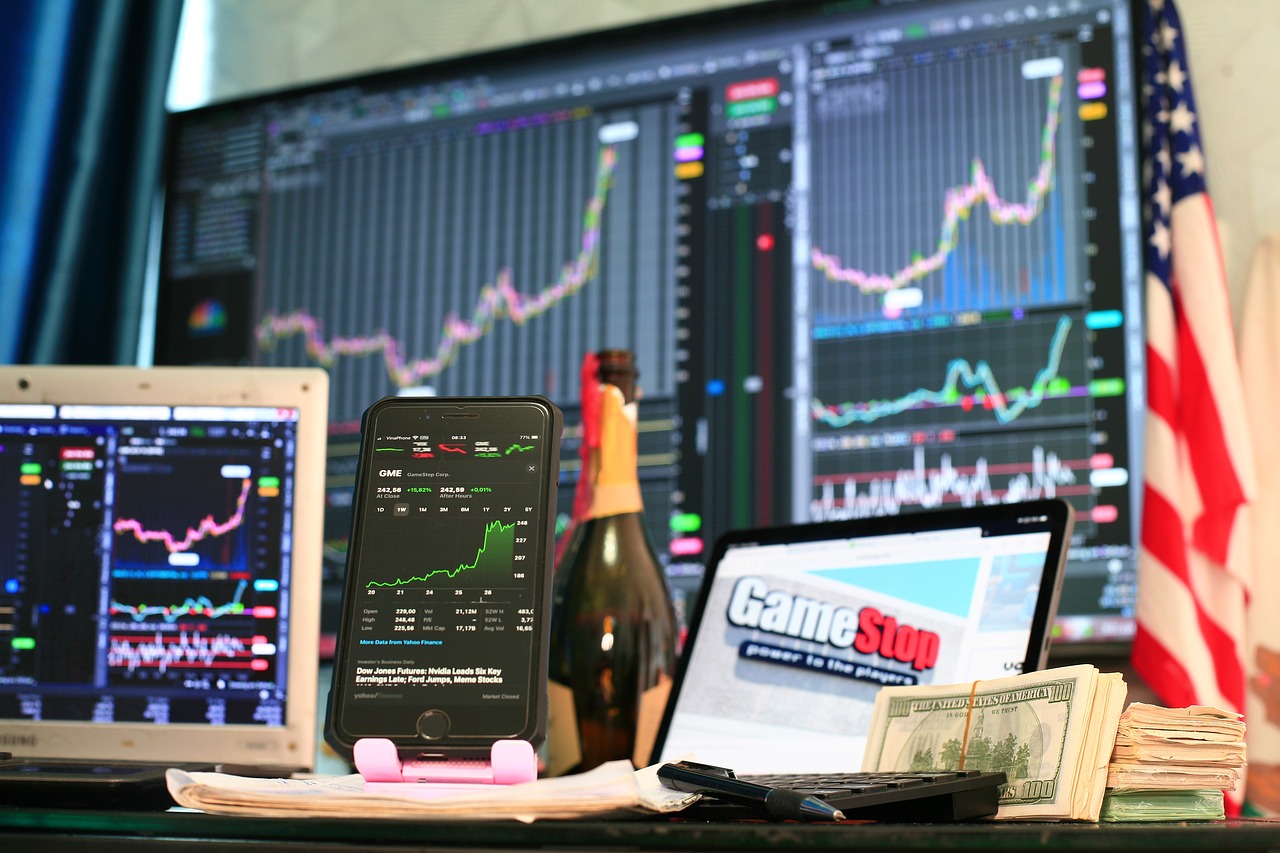
Networking and Community Learning
One of the most exciting aspects of trading simulations is the opportunity they provide for . Imagine stepping into a vibrant marketplace, not just filled with numbers and charts, but with fellow traders eager to share their insights and experiences. This collaborative environment is invaluable, especially for those who are just starting their trading journey. By connecting with others, traders can exchange ideas, strategies, and even emotional support, which can be crucial in a field as volatile as trading.
Many trading simulation platforms are designed to foster this sense of community. They often include forums, chat rooms, and social media groups where users can engage with each other. These platforms allow traders to:
- Share Strategies: Users can discuss what trading strategies worked for them, providing a real-world perspective that textbooks often lack.
- Learn from Mistakes: By sharing their experiences—both successes and failures—traders can help others avoid common pitfalls.
- Receive Feedback: Engaging with peers allows traders to get constructive criticism on their strategies, helping them refine their approaches.
Moreover, these interactions can lead to lasting relationships. As traders bond over shared experiences, they may form study groups or mentorships that extend beyond the simulation platform. This kind of networking not only enhances learning but also creates a support system that can be incredibly beneficial when transitioning to real-world trading.
Furthermore, participating in community discussions can expose traders to diverse viewpoints and techniques they might not have considered otherwise. For instance, one trader might have a knack for technical analysis, while another excels in fundamental analysis. By learning from each other, traders can develop a more rounded skill set, making them better prepared for the challenges of real trading.
In essence, the community aspect of trading simulations transforms solitary learning into a rich, interactive experience. It breaks down the barriers of isolation that many traders face, ultimately leading to a more profound understanding of the market and improved trading performance.
1. What are trading simulations?
Trading simulations are virtual platforms that mimic real market conditions, allowing users to practice trading without financial risk.
2. How can I benefit from using a trading simulation?
You can enhance your trading skills, develop strategies, and gain a better understanding of market dynamics in a risk-free environment.
3. Can I network with other traders in simulations?
Yes! Many trading simulation platforms include community features that allow you to connect with other traders, share experiences, and learn collaboratively.
4. Are trading simulations suitable for beginners?
Absolutely! Trading simulations are particularly beneficial for beginners as they provide a safe space to learn and practice without the fear of losing real money.
5. Will using a trading simulation guarantee success in real trading?
While trading simulations can significantly improve your skills and confidence, real trading involves additional complexities and risks. It's essential to continue learning and adapting.
Frequently Asked Questions
- What are trading simulations?
Trading simulations are virtual platforms that mimic real market conditions, allowing traders to practice their skills without any financial risk. They serve as a safe space for both beginners and experienced traders to hone their strategies and understand market dynamics.
- How do trading simulations enhance learning?
These simulations provide a hands-on learning experience where users can apply theoretical concepts in a practical environment. By engaging in interactive scenarios, traders can grasp trading principles more effectively and retain knowledge longer.
- Can I analyze real-time market data in trading simulations?
Absolutely! Most trading simulations allow users to analyze market trends and data in real-time, which is crucial for developing analytical skills. This practice prepares traders to make informed decisions when they transition to actual market conditions.
- Is feedback provided in trading simulations?
Yes, most platforms offer feedback on your trading performance. This feature is essential as it helps users identify their strengths and weaknesses, paving the way for continuous improvement and skill enhancement.
- How do trading simulations help with risk management?
Trading simulations allow participants to experiment with various strategies in a risk-free environment, enabling them to learn effective risk management techniques. This skill is vital for minimizing potential losses in real trading scenarios.
- Will using a trading simulation build my confidence?
Definitely! As you gain experience and see positive results in simulations, your confidence in your trading abilities will grow. This newfound assurance prepares you for real market challenges.
- Can I develop trading strategies using simulations?
Yes, trading simulations provide an excellent platform for developing and testing various trading strategies. This experimentation is key to finding approaches that suit your individual trading style.
- How can I adapt to market changes using simulations?
Simulations allow traders to practice adjusting their strategies to changing market conditions. This adaptability is crucial for navigating the unpredictable nature of real financial markets.
- Is there a community aspect to trading simulations?
Many trading simulation platforms foster communities where users can share experiences and strategies. This collaborative environment enhances learning through shared insights and collective knowledge.


